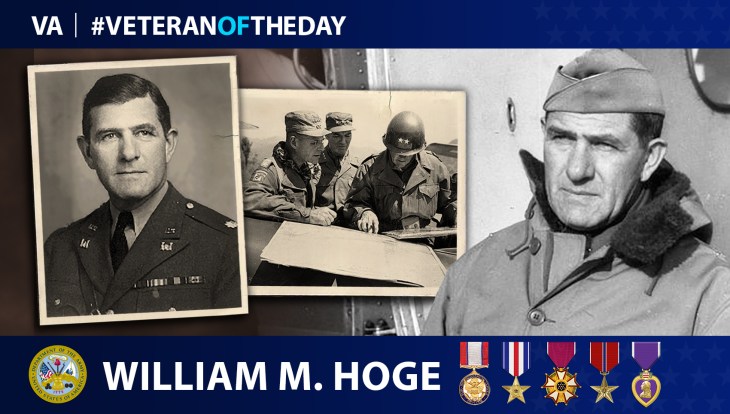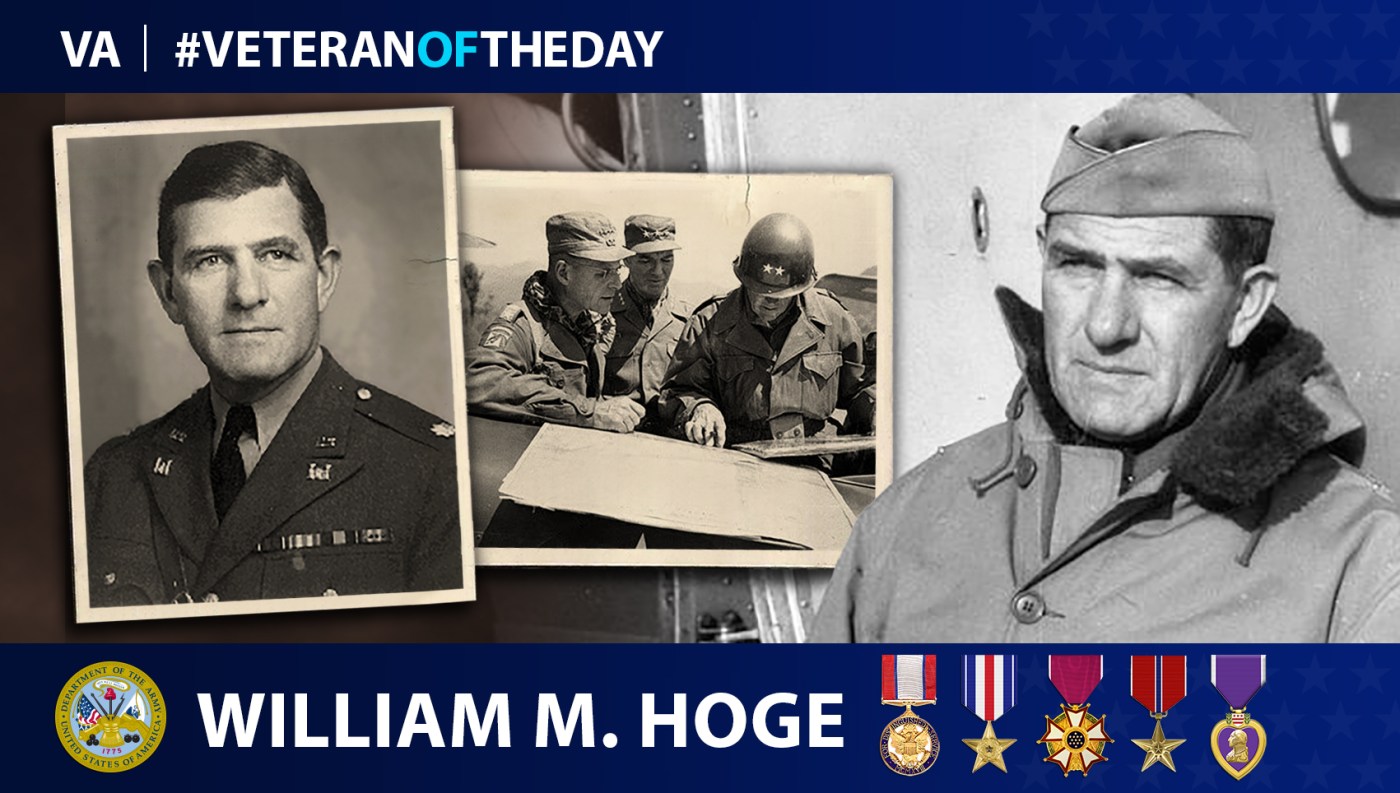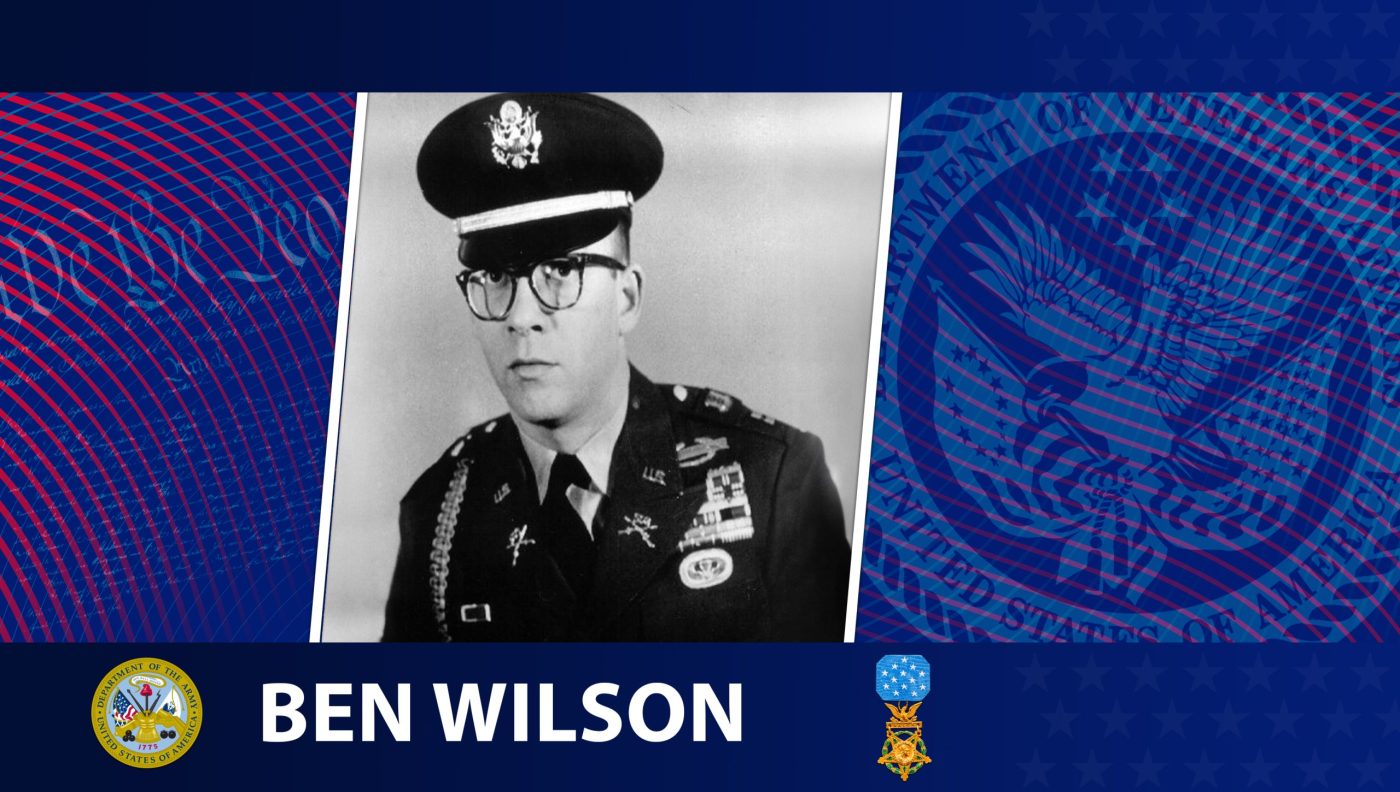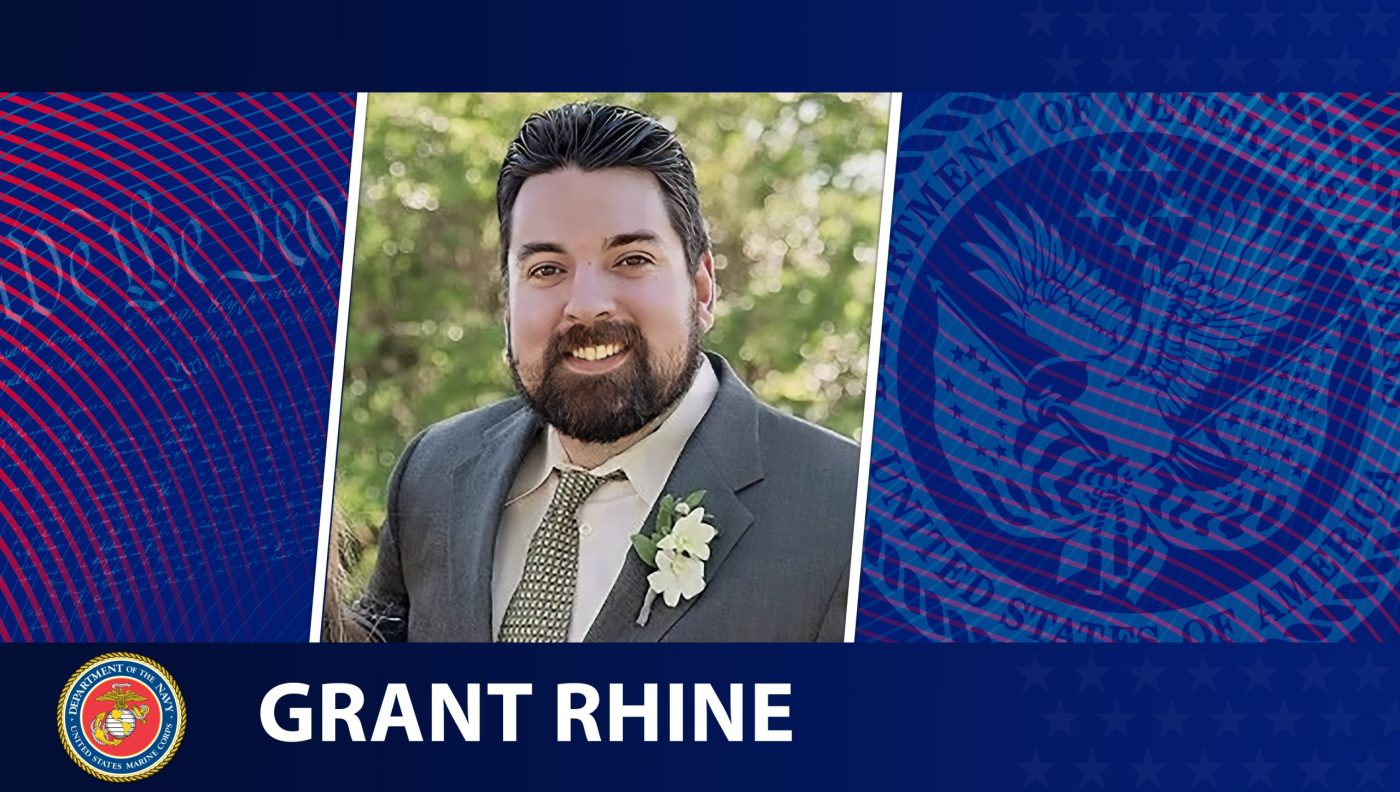August 31, 2022: William Morris Hoge

William Morris Hoge was born in Boonville, Missouri, in January 1894 on the campus of the Kemper Military School, where his father served as principal. He was appointed to the U.S. Military Academy at West Point in 1912, graduated in 1916 and was commissioned into the Army Corps of Engineers.
During World War I, Hoge was assigned to the 7th Engineer Regiment and deployed to France. In late 1918, as a battalion commander during the Meuse-Argonne Offensive, he led troops in a 20-hour battle while working to bridge the Meuse River. He returned to the U.S. in 1919 and pursued education, training and civil works assignments, receiving a bachelor’s degree in civil engineering from the Massachusetts Institute of Technology in 1922.
In late 1940, during World War II, Hoge—by then a lieutenant colonel—was placed in command of the Engineer Replacement Training Center at Fort Belvoir in Virginia, where the facility was crowded with construction equipment, leaving little room for the trainees to exercise. Concerned about the physical fitness of his men, Hoge followed the example of German troops who trained in fields filled with trenches and obstacles to climb, crawl and jump over. Working with a physical training officer, Hoge designed the Army’s first obstacle course, which was outfitted with hurdles, ladders, ropes, pipes and barbed wire, and was designed to be completed in less than 10 minutes. After seeing the course for himself, the Army chief of staff, impressed with Hoge’s work, ordered every base and camp to build their own.
“They’d murder me if they ever found out I was responsible,” Hoge said, referring to the countless soldiers who endured his training course.
In 1942, President Franklin Roosevelt ordered the construction of the Alaska-Canada (ALCAN) Highway that would serve to supply American troops in Alaska. The road stretched over 1,500 miles through the Canadian wilderness and cost more than $100 million to build. Hoge was placed in charge of the project; he and his engineers completed the ALCAN Highway—now called the Alaska Highway—in nine months.
Afterward, Hoge commanded troops in the Provisional Engineer Special Brigade Group landing at Omaha Beach on D-Day. In the Battle of the Bulge, he served in Combat Command B of the 9th Armored Division, and commanded IX Corps during the Korean War. Hoge was later promoted to general and named commander-in-chief of United States Army Europe. He retired from the military in 1955.
Hoge received numerous honors, including a Distinguished Service Cross, a Distinguished Service Medal with two oak leaf clusters, a Silver Star with one oak leaf cluster, a Legion of Merit, a Bronze Star Medal, a Purple Heart, an Air Medal, a World War I Victory Medal with three battle clusters, a World War II Victory Medal and a National Defense Service Medal.
Hoge died on Oct. 29, 1979, at the age of 85.
We honor his service.
Nominate a Veteran
Do you want to light up the face of a special Veteran? Have you been wondering how to tell your Veteran they are special to you? VA’s “Honoring Veterans” social media spotlight is an opportunity to highlight your Veteran and his/her service.
It’s easy to nominate a Veteran. Visit our blog post about nominating to learn how to create the best submission
Writer: Stephen Hill
Editors: Alexandra Kaiser, Theresa Lyon
Researchers: Carl Wesseln, Timothy Georgetti
Graphic Designer: Kiki Kelley
Topics in this story
More Stories
This week’s Honoring Veterans Spotlight honors the service of former MLB player and Army Veteran Richard “Dick” Groat, who served from 1953 to 1954 during the Korean War.
This week’s Honoring Veterans Spotlight honors the service of Army Veteran Benjamin F. Wilson, who served during World War II and the Korean War.
This week’s Honoring Veterans Spotlight honors the service of Marine Corps Veteran Grant Rhine, who is now active in the Veteran community Irreverent Warriors.






